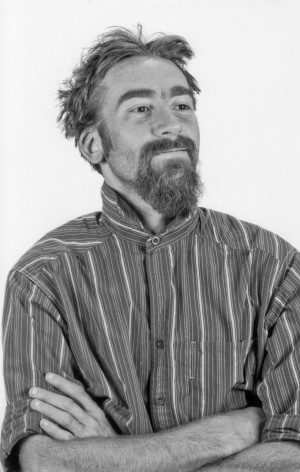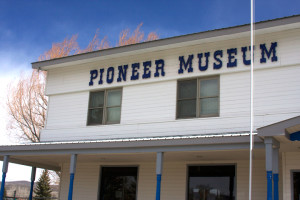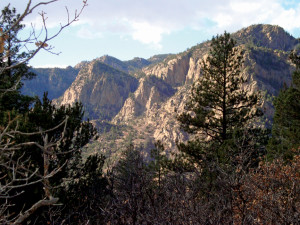By Martha Quillen
In the early seventies my husband and I moved to Kremmling, which was the sort of small Colorado mountain town you passed through on your way to somewhere else. We bought, and then later sold, the weekly newspaper in Kremmling, then headed south to Salida in the spring of 1978.
Although lower in elevation, Salida was presumably a step up. It was four times bigger than Kremmling, and a lot of its homes and buildings were picturesque, historical and made of brick. Plus they faced paved streets with curbs and sidewalks.
In 1978, Kremmling’s architectural style was dominated by listing frame buildings, many of them dating back to the nineteenth century. But very few could be classified as quaint or charming. The first year we were in Kremmling, the two-story wooden building next to our newspaper office fell into the street one night, undermined by a heavy rain and years of neglect.
When we lived there, bars outnumbered churches, pickups were ubiquitous, and arguments often ended in gunfire. It’s a mystery whether the lack of actual firearm injuries was because the participants were just letting off steam, or were too drunk to aim. Either way, Kremmling was not temperate in any sense. But I’m sure tempers have cooled since then. Now that Colorado’s extractive industries are in decline, young rowdy cowboys and miners are not so common.
Today, mountain towns are fishing for tourists. For that, Salida enjoys a better position than Kremmling. Although it is surrounded by mountains, Kremmling’s most noteworthy view is of a big, barren butte the locals call the mud cliffs. The town is wetter, grayer and cloudier than Salida, and bone-numbing cold in the winter.
Kremmling has its attractions, though. The surrounding area offers camping, hiking, fishing, hunting, boating, snowmobiling, cross-county skiing, white-water and wilderness. And the old-timers love their community and its history.
Kremmling is nowhere near as cute as Salida, but appearances can be deceiving. In many ways, Kremmling is more prosperous. The median household income in Salida is $36,387, compared to Kremmling’s $42,337. Colorado’s average median income is $56,456, so neither figure is worth writing home about, but housing in Kremmling is considerably more affordable. Kremmling also has a lower poverty level, with 7.93% of its population living in poverty, in comparison to Colorado’s 12.24% and Salida’s 12.92%.
Once upon a time, both towns were heavily reliant on Colorado’s old-fashioned industries – mining, ranching, railroading and logging – and both had to embrace new directions in order to survive. Consequently, both turned toward tourism, but Kremmling’s efforts have been low key and traditional. It offers more hunting and outdoor outfitters and guest homes and ranches than it once did.
Kremmling just doesn’t have the means (nor inclination, I suspect) to become a major resort. However, it is within commuting distance of Silverthorne, Breckenridge, and Frisco, and it sits between them and Steamboat Springs. Population-wise, those towns aren’t big, but they have experienced phenomenal growth. Its neighbors have plenty of lodging, second homes and amenities to keep visitors coming and going, and that translates into added revenues for Kremmling, which has the added bonus of not having to pay for flashy attractions.
Salida, on the other hand, is trying to be a resort, and toward that end it has cleaned up, added parking and even changed the course of its river. Salida has vast and much improved city offices, impressive parks, a paved trail, a river walk complete with “beaches,” a new bandstand, two new schools with a third in the works, a new hospital, and a new sewage treatment plant. Now new development is transforming the city’s east side, and there’s a proposal on the table to spend $5.3 million to remake Centennial Park into a tourist destination.
A commercial advisory website called AreaVibes gives Salida an A+ for Amenities, but a D for Cost of Living, and a D+ for Employment, while Kremmling gets a D for Amenities, but an A for Cost of Living and a C+ for Employment. Both places earn the dubious classification of “Somewhat Livable.”
However, many old-timers in Salida will tell you that our city is no longer livable at all. I repeatedly hear complaints from residents who are furious about their soaring water and sewer bills and Salida’s nonstop improvement plans. But I also hear plenty of praise from citizens who are thrilled about the new schools, playholes, boating ramps and bike trails. The way some Salidans see it, the city is indulging in a crazed spending spree with no end in sight. Whereas others still want a new outdoor swimming pool and eighteen-hole golf course.
For almost three decades now, Salida has been intent on attracting more tourists, but tourism is a problematic industry. Tourism tends to offer seasonal jobs with meager wages and few benefits; yet there is often fierce competition for them due to the surplus of attractions. The industry also generates high land costs, expensive housing, and pricey restaurants and shops. Tourism likewise discourages businesses that might disturb visitors – including mines, quarries, factories and used car lots.
And what if a tourist town is really successful? The rewards for locals are a mixed bag. Breckenridge, for example, has a median household income of $54,000, which soars above Salida’s, but it lags behind the Colorado average. AreaVibes gave Breckenridge an A+ for amenities and an F for Cost of Living. In Breckenridge, the median cost of an owner-occupied home is $682,100, compared to Salida’s $227,000.
Tourism is hard on natives. Tourists generate traffic, crowd grocery stores, and create lines at restaurants – and sometimes, it is just plain annoying when your town advertises your favorite fishing hole or hosts noisy weekend extravaganzas in your neighborhood.
And when the tourists buy second homes? Or retire and move in?
They are usually richer than the original population, and they eagerly promote all sorts of expensive changes. In Salida, costs are rising beyond the means of many residents, but the newcomers don’t seem to notice the natives’ distress. During the last election, proponents of the school bond issue repeatedly claimed that their opponents didn’t care about education. It didn’t seem to occur to them that some residents simply can’t afford more.
Lately a lot of Salidans muse about places where you can buy a three bedroom, two bath home in good condition for half of what it would cost here. Some old-timers just gripe, but others have actually left. Neither group seems to inspire much public sympathy.
But hey, this is the West. When immigrants arrive with a dream, the natives have to go. This time around the migration won’t be tragic – Salidans are leaving of their own free will and going where they please. But it is sad. I miss the old Salida with its third-class attractions and minimalist festivals. I liked the quiet, the lack of lines at the grocery store, and the dearth of traffic. But it wasn’t good for business.
Besides, it would be disingenuous of me to pretend that I was enthusiastic about the state of Salida when I moved in. In the 1970s and ‘80s a lot of young artists, craftsmen and construction workers took up residence here to take advantage of the low real estate prices. And as newcomers, we were eager to improve the place, too.
In those days, many elderly citizens were trying to get by on meager pensions and inadequate savings and they protested any sort of improvement. The swings in the parks were always broken; an old merry-go-round sagged to one side; and the streets had cat-catching-deep potholes. Newcomers wanted safer playground equipment, more foreign language and science classes at the high school, and better maintenance of city and school property.
At first, resistance was huge and the newcomers lost at every turn. But eventually things changed. Salida got new playgrounds, park benches and radio stations. In that era, newcomers wanted modest changes, but even those changes led to big increases in city staffing and administrative costs.
Now the pace of change has escalated, and the reformation seems limitless. The town costs more, spends more and has changed more than anyone would have wanted 25 years ago (when half of the town was boarded up).
If the city’s plans go well and Salida continues to improve at its present pace, I suspect a lot of old residents will leave, but new people will doubtless arrive. And in a decade or so, today’s newcomers will look around at the new developments and amenities and wonder what happened.
That’s the biggest drawback of tourism: Resort towns aren’t designed for the people who live in them; they’re constantly being revamped for the people who are coming. So whether you go or stay, you end up living in a whole different place.
Martha Quillen lives, works and vacations in Salida.


